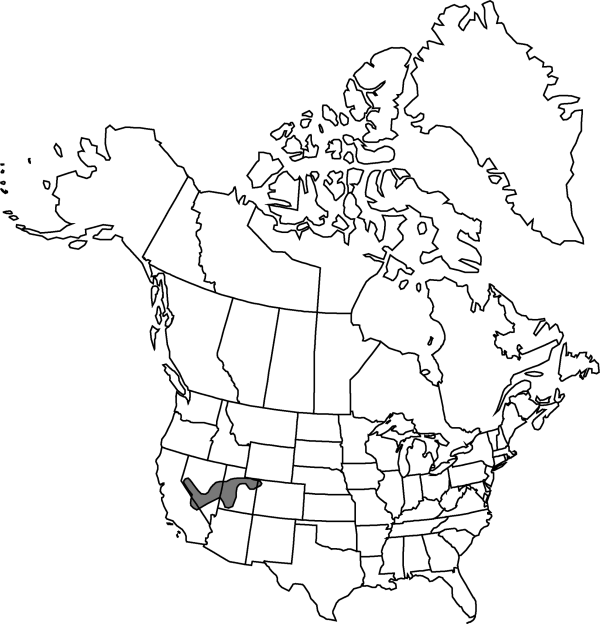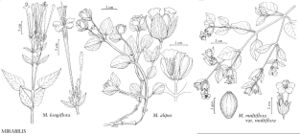Mirabilis alipes
Madroño 25: 120. 1978.
Herbs, forming hemispheric clumps 6–8 dm diam., glabrous or very sparsely puberulent. Stems 2–4 dm. Leaves spreading; petioles of proximal leaves 0.5–0.7 cm; blades of midstem leaves ovate to widely ovate, 4.5–9 × 3.5–5 cm, base obtuse to rounded, often oblique, apex obtuse, rarely acute. Involucres: peduncle 3–10 mm; involucres erect to pendent, 11–30 mm; bracts 6–9, distinct or to 50% connate, apex acute to obtuse, rarely rounded. Flowers 6–9 per involucre; perianth usually magenta, occasionally creamy white, bell-shaped, 1.5–1.8 cm. Fruits mottled olive green, with 10 slender, tan ribs, ellipsoid, 5.5–7 mm, rugulose, glabrous, secreting thick, heavy mucilage when wetted.
Phenology: Flowering spring–late summer.
Habitat: Gravelly or sandy soils in arid brushlands or pinyon-juniper woodlands
Elevation: 1200-2000 m
Distribution

Calif., Colo., Nev., Utah.
Discussion
Hermidium was once maintained as a genus based on discrete involucral bracts. As discussed by G. E. Pilz (1978), distinct bracts are typical, but involucres with the five outermost bracts united to one-half their length are common.
Selected References
None.
